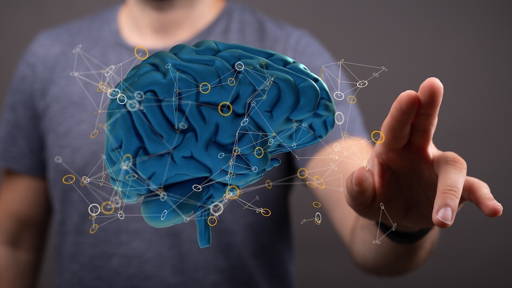Artificial intelligence (AI) is rapidly transforming biomedical research. A new study from Vanderbilt University Medical Center shows just how powerful it can be. By combining AI with advanced “protein language models,” researchers have developed a method to accelerate the design of monoclonal antibodies that can prevent or reduce the severity of life-threatening viral infections.
The research, carried out in collaboration with institutions in the U.S., Australia and Sweden, demonstrates that AI can design functional human antibodies that recognize specific viral surface proteins, without needing an existing antibody as a starting point. This could mark a major step toward a future where biologic drugs are designed entirely by computers. The study was recently published in Cell.
Important milestone
“Our study represents an important milestone toward our ultimate goal: using computational models to design new biologics from scratch and bring them into clinical use,” says Prof. Ivelin Georgiev, senior author and director of the Vanderbilt Program in Computational Microbiology and Immunology. “These approaches will have a profound impact on public health and can be applied across a wide spectrum of diseases, from viral infections to cancer and autoimmune disorders.”
The team’s AI model, called MAGE (Monoclonal Antibody Generator), was trained on previously characterized antibodies targeting the H5N1 avian influenza virus. Once trained, MAGE was able to generate new antibodies that recognized a related, but previously unseen, influenza strain. This ability to generalize and adapt highlights the model’s potential to respond to new viral threats in real time.
Accelerate therapy development
Traditional antibody discovery methods rely on collecting blood samples from infected individuals or obtaining antigens from novel viruses, a process that can take months. AI-driven systems like MAGE could cut this timeline drastically, enabling faster development of targeted therapies during outbreaks.
According to Georgiev and his team, the broader implications are significant. Protein language models, the same type of large-scale algorithms behind modern chatbots, could soon become vital tools in precision medicine, helping researchers design more effective therapies tailored to both pathogens and patients.
Early virus detection
Last month, a publication in The Lancet Infectious Diseases highlighted how AI, combined with the One Health approach, can strengthen global preparedness for future pandemics. Researchers, including Marion Koopmans (Erasmus MC) and Frank Møller Aarestrup (DTU, Denmark), describe AI as a valuable “co-scientist” capable of integrating data from humans, animals and the environment to detect early warning signs of disease outbreaks.
By analyzing large and complex datasets, AI can identify hidden patterns and pinpoint high-risk hotspots, for example, specific regions, animal species or wastewater sources, that require closer monitoring. One key application is metagenomic sequencing, which screens environmental samples for known and unknown microorganisms. AI filters these massive datasets and predicts how genetic mutations may affect viral transmissibility or severity, offering early insights into potential threats.
The One Health principle underpins this approach, recognizing that human, animal and environmental health are interconnected. With increasing risks from climate change, intensive farming and habitat loss, early detection of cross-species virus transmission (“spillover”) is more critical than ever. Koopmans emphasizes that AI will not replace scientists but will become an essential collaborator. When combined with human expertise, AI can make early detection and prevention of new infectious diseases more achievable than ever before.







